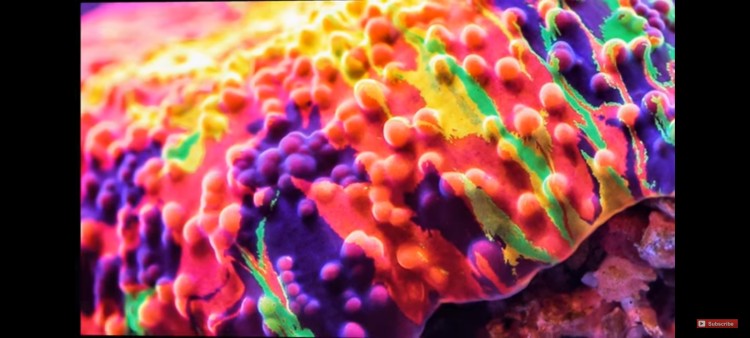Top 5 Success Tips: Do You Really Want a Copper banded Butterflyfish Care Guide?
- Nov 21, 2021
- Anshika Mishra
- 487 0 0

The Copperbanded Butterfly is an extremely difficult fish to keep, and the best advice is not to buy one. But if you are determined to get one, then this is the article for you. So here we are sharing the top 5 tips to give you the best possible chance of success.
Is Your Tank Suitable?
The first thing you'll need to consider is how suitable your tank is. Most literature will recommend at least a 100-gallon tank. You will find places that recommend as little as 55-gallons, but a smaller tank will decrease your chances of success.
In the wild, Copperband uses their long beaks to pick food out of crevices in rock work, which they spend their entire day. So, the less space and rock work you have, the less happy they will be.
You should avoid adding this fish is tank less than a year old. Some believe that a bear quarantine-style tank is the best place to get a Copperbanded feeding without competing with other fish. But, the Copperband can also benefit from a more natural environment which means an established tank with corals, hiding places, and an abundance of natural microfaunae such as fan worms and Aptaisa.
It is also worth avoiding aggressive tank mates. Copperbanded is a timid, slow-moving fish. So, they cannot escape bullying easily. Therefore, adding a Tang after Copperband is the way to go.
Specimens Selection
Most marine shops will get multiple Copperbanded fish every week. So, there is no need to rush for fear of missing out. However, you will want to spend good five minutes examining the fish, looking at it closely, and looking for any signs that it is not in good health.
The most obvious is to look for marks on the fin that don't look natural such as scuffs or scars, or damage to the beak. Also, if it has any white spots on it, walk away. White areas are usually some disease, and even something relatively harmless like fluffy white lymphocytic spots is better avoided. The less stressed the fish is, the better.
Most importantly, you want to make sure that it is not too thin. If you don't know what to look for, that is a sure sign in itself that you are not ready to buy a Copperband, and it will do you good if you see dozens of specimens over several months, so you get used to noticing smaller details.
Being laterally compressed, Copper bands are thin-looking fish at the best of the times, but if they have no wait on them, they probably haven't eaten much at all for weeks. So, they are almost certain to die.
The fish should also be settled in a shop swimming around the rock, looking for food and not cowering in a corner. Finally, once you have ticked all of these boxes, which is likely to be at least a few months into your search, you should ask to see it feeding.
If it tentatively picks one or two bits of food after carefully inspecting them, walkway. There will be fierce competition in your tank, and food will go quickly so that a tentative eater won't stand a chance. You want to see it going crazy for food and eating as much as possible until there is none left; anything less is a hard pass.
It is also worth pointing out that an enthusiastic eater is a minimum requirement, not an indication of success. For example, copper bands are notorious for going on hunger strikes when they change tanks.
Once you have ticked all of these boxes, you are ready to take them home, which is where the hard work begins.
Feeding
Weaning them onto a captive diet is very hit and miss indeed. So, to increase your chances of success, you will want to throw the kitchen sink at it and try a wide variety of food. The anecdotally of food that has worked well includes live blood worms, clams on the half shell, Mysis shrimp, and garlic-infused Mysis shrimps.
If you use Mastic, try to wedge it into your rocks to replicate the Copperbands' natural feeding behavior. You can also create a feeding device that only the Copperband's beak can get into. The most common method is to drill holes into a PVC pipe and attach it to a magnetic glass cleaner.
With all these tips, it is by no means a guarantee, and each one will decrease your chances of failure.
Ongoing Care
Your Copperband will clear out the Aptaia and algae in your tank. If you have rocks in your sump with Aptaisa on them, it is good to put them in your tank and let the Copperband eat the Aptaisa, then return the stone to your sump for more algae and Aptaisa to grow, and repeat the process.
Once you have figured out how to keep it alive, you will find the care for it easy daily.
Buy Something Else
If you do not play the game, you cannot lose. Chances are, no matter how much you try, the chances of success are very slim. For every healthy Copperband, you see online, there will be ten dead ones, and it feels pretty bad when you are responsible for the death of such a beautiful fish.
So, think long and hard before getting a copper band, and give real consideration to the brilliant alternatives like the Pyramid Butterfly or Yellow Longnose, both of whom are much easier to keep in only marginally less pretty.
Let us know in the comments below if you will buy is majestic risky fish, and if you already have one in your tank, please share your experience.
Happy Reefing!







About author